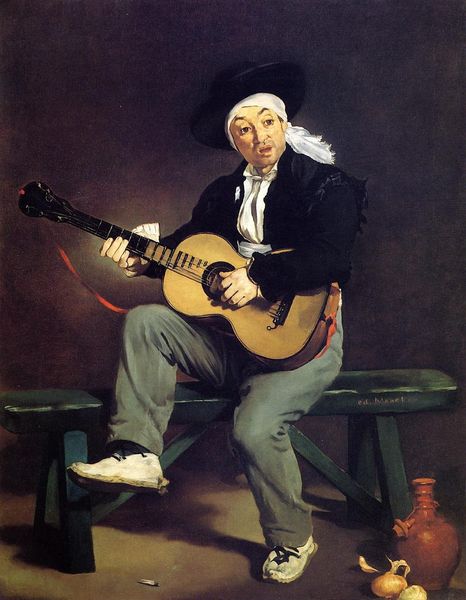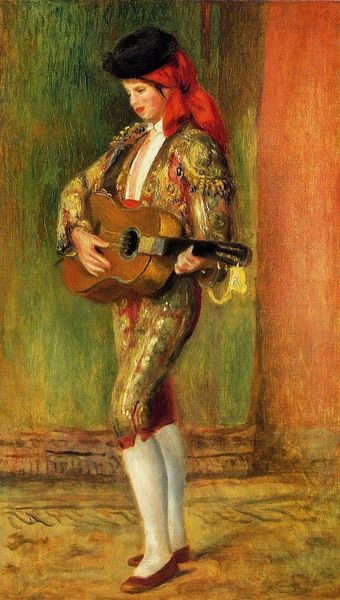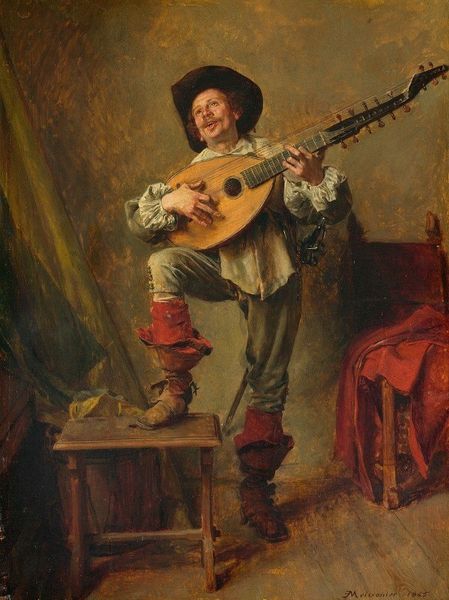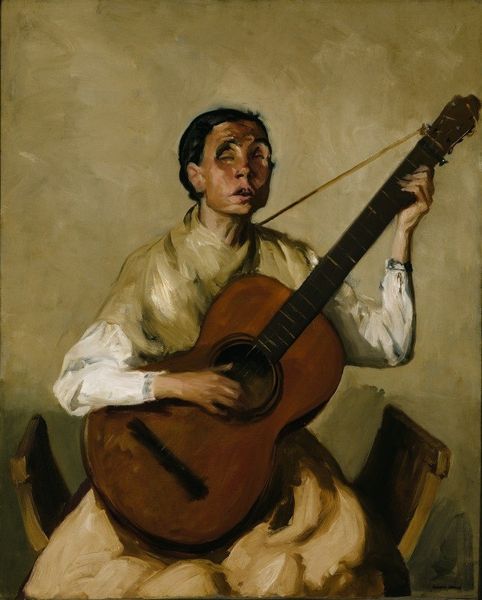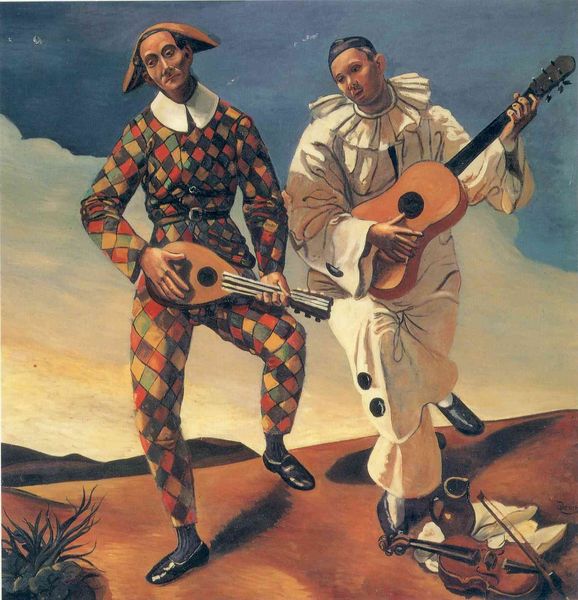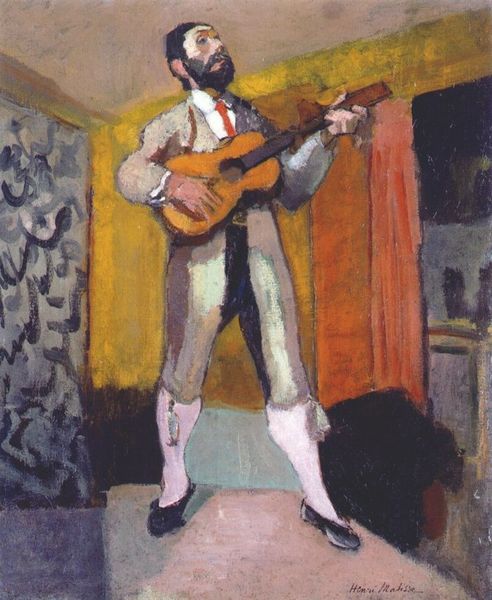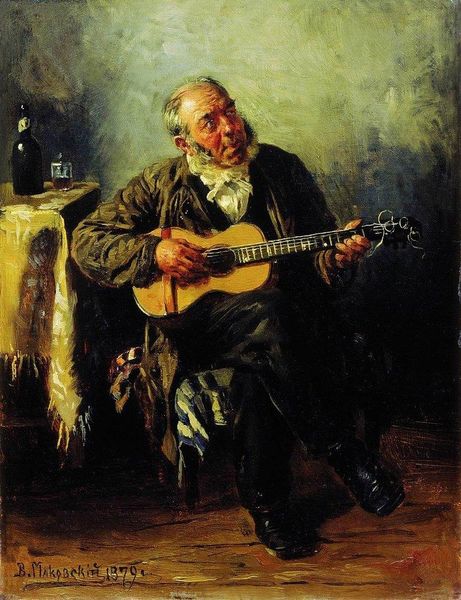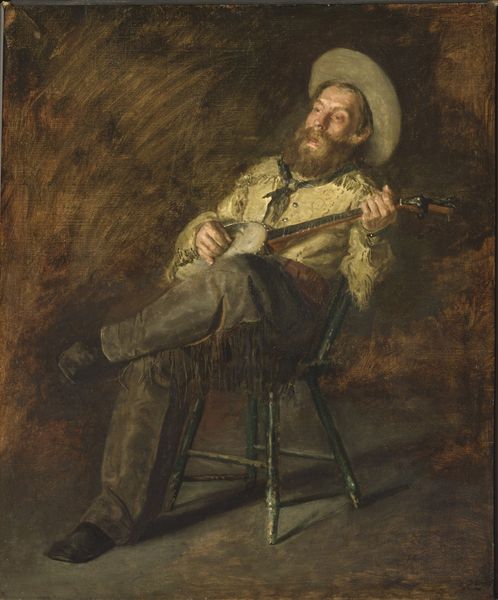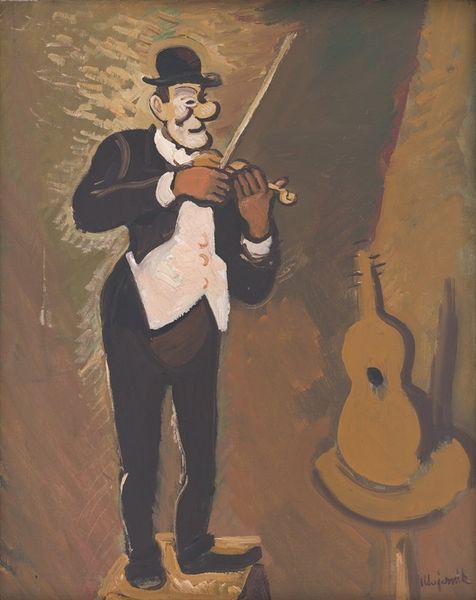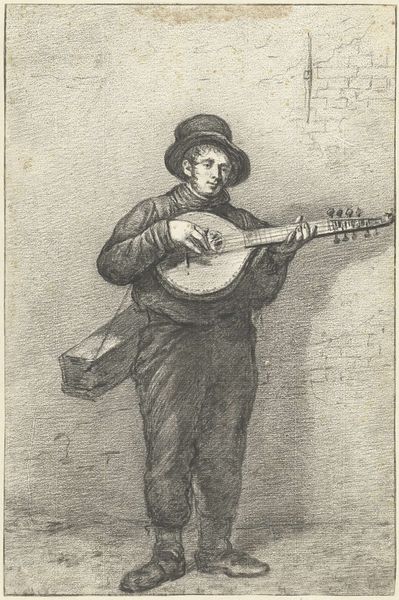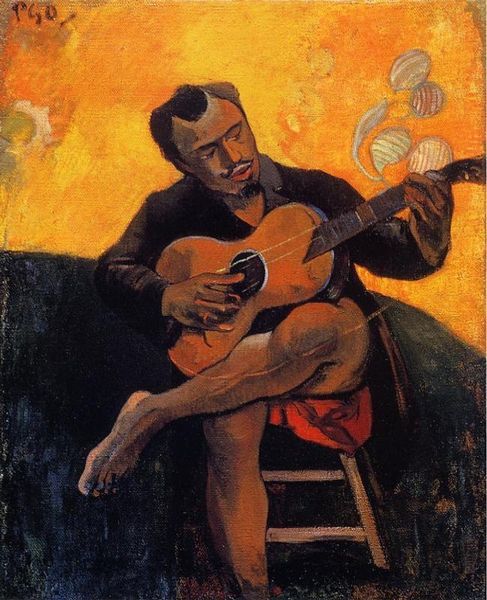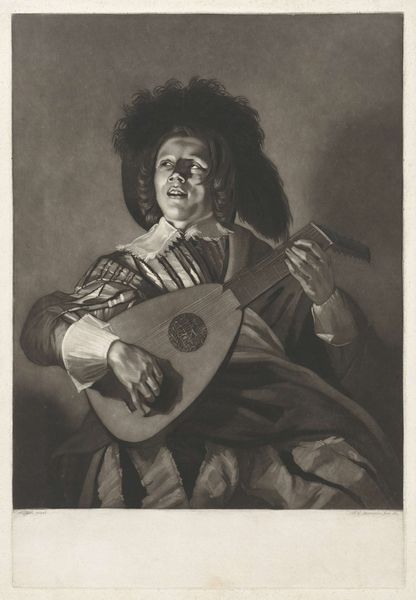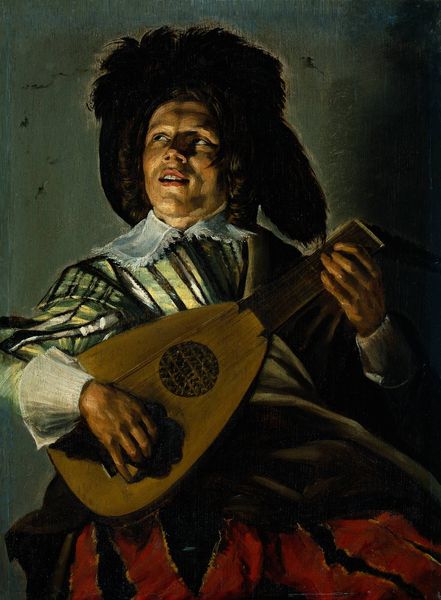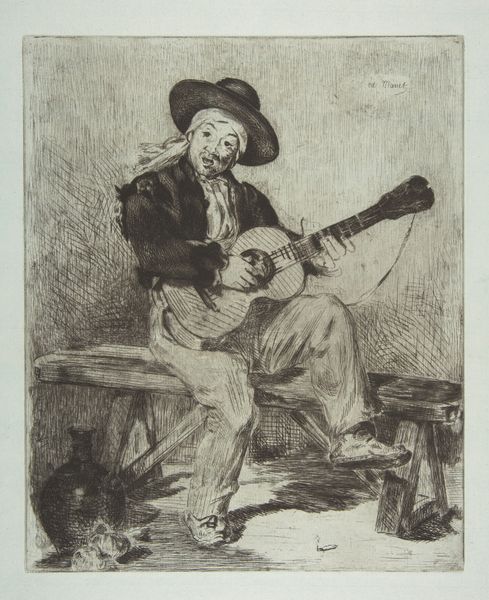
Copyright: Public Domain: Artvee
Editor: Renoir's "The Spanish Guitarist," painted in 1894 using oil paints, strikes me as an interesting portrait. The level of detail given to the guitar player’s jacket is quite stunning. What’s your perspective on the piece? Curator: The level of detailing in the garment invites us to think about fashion's socio-economic implications, in Spain or in France. Here we must ask who designed it? Where was it fabricated and from which material? How was the model remunerated? I would even push you further: How much did Renoir earn selling that artwork? Those questions shift our perspective from mere aesthetic admiration to considering the labour involved, challenging the traditional artistic valuation. Editor: That's a really interesting angle. I hadn't considered the socio-economic impact. Were such depictions common in Impressionism? Curator: They were not overtly political, yet still reveal cultural contexts. The textile trade in the 19th century, for example, reflects globalized markets. Renoir's attention to the guitarist’s clothing subtly points towards that industry, even though that may not have been his primary goal. Don't you think it's significant that we rarely ask where exactly the textile, dyes and labor to create those details originated? Editor: I guess I see how you can use a close reading to highlight those power structures! Curator: Precisely. Considering materials and means of production is often neglected when analysing art. What have you learned here today? Editor: To remember to ask questions about not just *what* the artwork shows, but how it came into being and the cost on people and materials to make it.
Comments
No comments
Be the first to comment and join the conversation on the ultimate creative platform.
